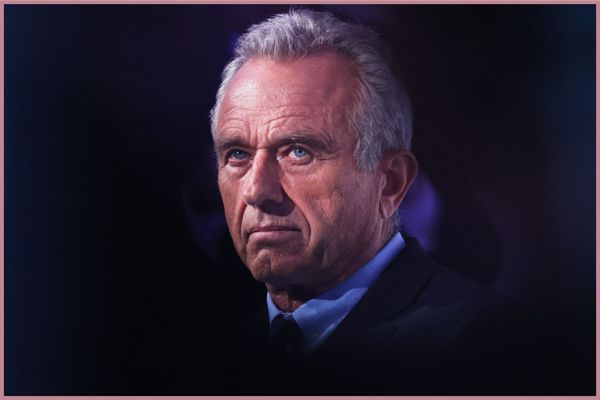Inside a shared workspace for technology start-ups in south-west London, Christian Lelong has a bird's-eye view of some of the dirtiest secrets of Australia's mining industry.
Using satellite imagery from the European Space Agency combined with meteorological data and atmospheric models, Mr Lelong, the director of natural resources at geospatial analytics firm Kayrros, has been able to measure methane leaks from the fossil fuel industry around the world.
What he has found above Queensland's coal-rich Bowen Basin raises serious questions about whether Australia has been accurately reporting its greenhouse gas emissions to international bodies.
"We found that emissions for all the 50-odd mines in that basin in total add up to about 1.5 million tonnes of methane per year," Mr Lelong told the ABC.
According to federal government figures for the same period, only a third of that amount of methane was reported in the area.
If accurate, Kayrros's data portrays an extraordinary picture of the potential impact Australia's coal industry is having on the Earth's atmosphere.
In the fight to keep global warming under 1.5 degrees Celsius, methane matters. It is far more potent than carbon dioxide (CO2) and is responsible for around 30 per cent of global warming to date.
Typically, methane leaks occur from coal mines, oil and gas wells and natural gas pipelines.
Reducing these leaks helps buy the planet time to get other greenhouse gas emissions under control and is one of the easiest ways to reduce emissions.
At the global climate change summit COP26, over 100 nations signed a pledge to reduce methane levels by 30 per cent by 2030.
Australia's government did not sign the agreement, and the opposition Labor party has no plans to sign up to the pledge if it wins at the next election.
The Australian government doesn't want Christian Lelong's help
Mr Lelong knows the Australian mining industry well
He worked for BHP for seven years before joining Goldman Sachs as a commodities analyst. Now he wants to help the Australian energy sector reduce its methane emissions.
He has approached the federal government through the Department of Energy and offered to share his company's knowledge and expertise. That offer has not been taken up.
Greens environment spokeswoman Sarah Hanson-Young met with Mr Lelong at COP26 in Glasgow and cannot understand why Australian officials are not jumping at the chance to use the technology.
"The Prime Minister says that they want a technology solution to climate change," Senator Hanson-Young said.
"Well, here we have incredible data satellite technology.
When the ABC approached Energy Minister Angus Taylor for comment, his office referred the matter to the Department of Industry, Science, Energy and Resources.
A spokesperson for the department said: "The Department of Industry, Science, Energy and Resources is developing a National Greenhouse Account Methane Monitoring System using Sentinel data to assess the implications of methane releases for the preparation of Australia's next National Greenhouse Accounts and is not looking for data analytic services from London."
The spokesperson also said that "the department believes, like the IPCC [Intergovernmental Panel on Climate Change], that it is premature to use the satellite data to quantify emissions directly".
Mr Lelong disputed that and said that view was expressed in the IPCC's 2019 report before it had evaluated modern satellites.
"Now we have a new generation of satellites, it changes everything," he said.
"They are much more accurate and precise."
However, the Department of Energy insists the Kayrros data "has not yet been well-verified by ground stations or more targeted studies" and that its approach "lacks transparency ... and would not be acceptable under the Paris Agreement".
That has not stopped the UN's new International Methane Emissions Observatory from working with Kayrros.
It told the ABC it was collaborating with the company and planned to use its tools and analytics in the coming months.
Dutch scientists raise further doubts about Australian emissions reporting
A peer-reviewed paper published this week by a group of Dutch scientists raises similar concerns about Australia's publicly released greenhouse gas figures.
It analysed data from satellite imagery of six coal mines in the Bowen Basin and found they were emitting much more methane than would be expected from what Australia is reporting.
Ilse Aben, who was the lead researcher on the paper, told the ABC that by studying emissions from the Hail Creek mine, run by Glencore, you could see that the figures did not add up.
"For Hail Creek, which is a surface mine, we found that it's actually responsible for roughly 20 per cent of the methane emissions, as reported by Australia for the total of all coal mines," she said.
"It is one surface mine and there are 73 surface mines in Australia.
A spokesperson for Glencore said in a statement: "It is not credible that a single open cut coal operation is responsible for 20 per cent of the industry's total annual methane emissions."
"Glencore reports emissions in accordance with the Australian National Greenhouse and Energy Reporting (NGERS) regulatory measurement criteria.
"The emissions from our Bowen Basin operations are accounted for in Glencore’s robust climate change targets. These targets include a 15 per cent reduction in total (including Scope 3) emissions by 2026; a 50 per cent reduction in total emissions by 2035 and an ambition to be a net zero total emissions company by 2050."
Bryce Kelly from the University of NSW, who has led research teams mapping emissions from coal mines, said the Dutch study had undergone extensive peer review.
"There is merit in the results," Dr Kelly said.
"Kayrros's independent studies further support that there are methane anomalies above what would be expected for the region based on reported emissions.
"We now need ground and airborne studies to verify the satellite observations."
Professor Aben said that while she had not seen Kayrros's results, they had found the emissions from six mines in the area were two times higher than was reported by the mining companies.
"So I'm not totally surprised … it's certainly not contradicting each other," she said.
Industry-supplied figures questioned
Currently, the data relied on by the federal government for its Greenhouse Gas Inventory is provided by mining companies which can then be subject to auditing and review.
The ABC asked BHP and Anglo American, two of the largest coal miners in the area, how they measured methane levels in the Bowen Basin. Neither company provided details.
In a statement, a spokesperson for Anglo American said: "We have invested significantly in methane capture infrastructure, generating enough electricity to power 90,000 Queensland homes every year, and reducing our emissions by about 5 million tonnes of CO2 equivalent per annum."
A spokesperson for BHP said: "BHP Mitsubishi Alliance estimates and publicly reports emissions from its Australian operations in accordance with the rigorous requirements of the National Greenhouse and Energy Act."
Senator Hanson-Young questioned whether industry figures supplied to the government were accurate.
"This is just more of how the Morrison government behaves with the fossil fuel industry, hand-in-glove dismiss the independent advice, dismiss the independent data and take the data and the word of the fossil fuel industry," she said.
"I know who I believe."







